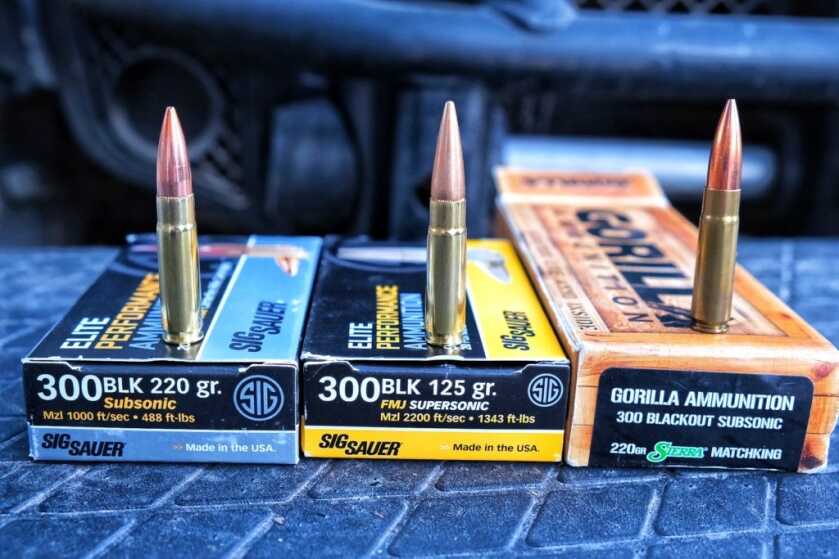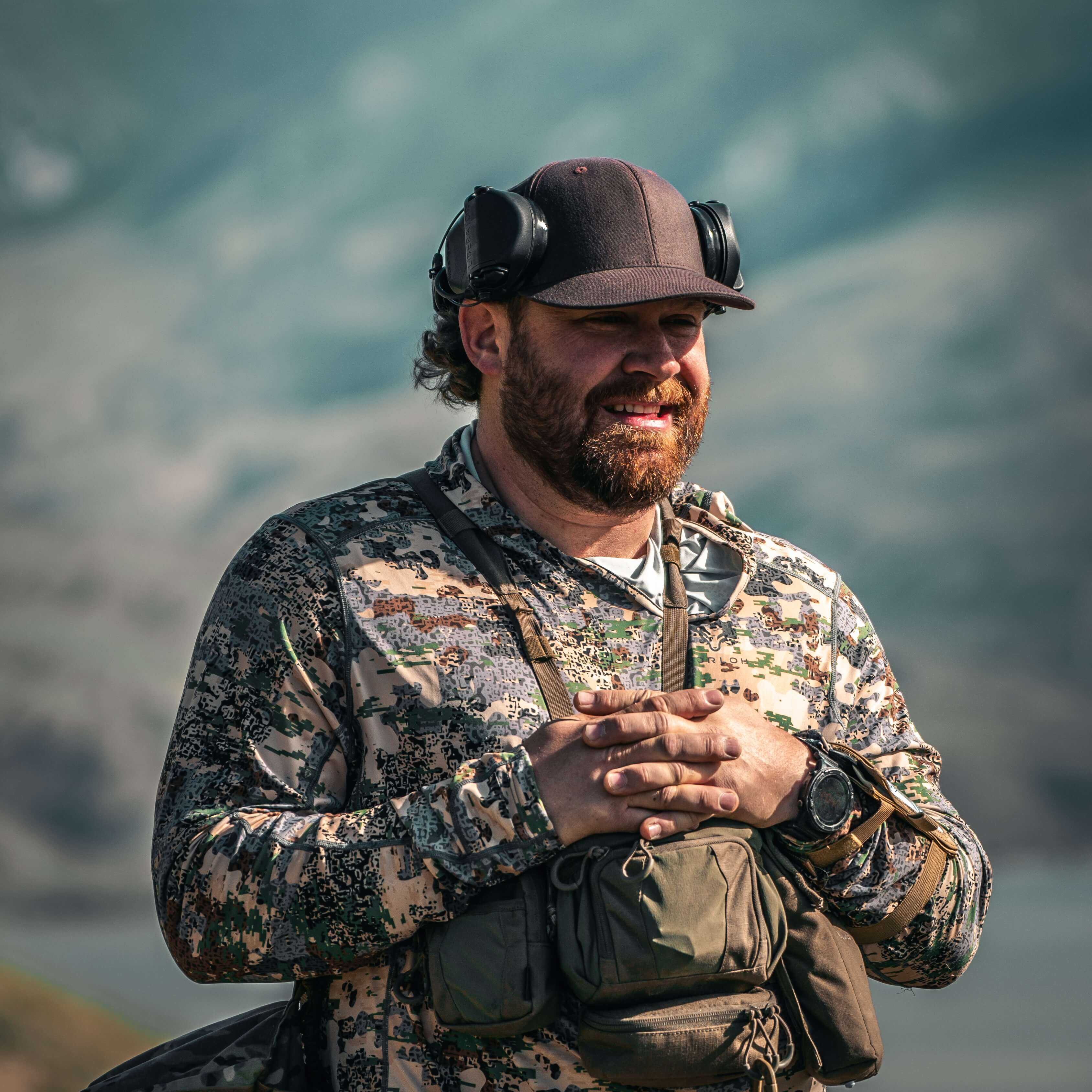

Most of the world has no idea that there are two sources of sound when a gun fires. The first source is the muzzle blast. It’s caused by the pressure and gasses escaping out the end of the barrel as the bullet exits.
The second source of sound is caused by the bullet breaking the sound barrier. Some of you know this phenomenon as a sonic boom. All bullets traveling faster than the speed of sound create this sonic boom or bullet crack. Thunder is a sonic boom on a larger than bullet-sized scale. Bullets or objects that travel faster than the speed of sound create shock waves that create a loud booming or crack. Essentially, the pressure waves at supersonic speeds can’t get out of the way of each other fast enough and they get compressed together, hence the boom. Airplanes that travel at Mach 1 or faster than the speed of sound can create sonic booms. The pilot won’t hear it as he’s traveling faster than the sound.
Traditionally, at thousand-yard F class matches, target pullers are 1000 yards from the shooter and are behind a giant dirt and concrete bunker located just underneath the paper target that is being shot. After the shooter fires, the target is pulled down, the score recorded, a spotter is placed in the bullet hole, and the target is pushed back up above the berm. Those people a thousand yards away from the rifle, standing 3-4 feet under the path of the bullet, wear hearing protection as most of the bullets are still supersonic and are still cracking (small sonic boom) as they pass over their heads. 1000 yards from the shooter and behind a concrete barrier you can’t hear the muzzle blast. The crack or sonic boom of the bullet passing just over your head, if you’re close enough, will cause hearing damage.

Suppressors or silencers can help mitigate the first source of sound, the muzzle blast. They act similar to a car muffler and disrupt, slow down, and retain the hot gases escaping from the muzzle of your gun. Suppressors do nothing to help the sonic boom or crack of the bullet. If you want to get rid of that, and have the quietest report, you must shoot subsonic ammunition as it’s going slower than the speed of sound and won’t create the “crack” through the air.
Supersonic ammunition includes all ammunition that is going faster than the speed of sound. You’d think that the speed of sound would be easy to define in feet per second but it’s slightly more complicated than that as it differs based on temperature, humidity, altitude, air density, etc.
However, the general consensus is that at sea level and at 68 degrees Fahrenheit sound travels at 1125 ft/s. At 32 degrees Fahrenheit, it travels at 1086 ft/s.
The general rule of thumb in the gun industry is that ammunition going over 1050 ft/s is supersonic and ammunition going under 1050 ft/s is subsonic. That’s obviously not scientifically accurate but it’s close enough for what we’re talking about today. So, if I want my ammo to be subsonic, it should be going no faster than 1050 ft/s, and if I want supersonic ammunition, hopefully it will be going substantially faster than that. It’s possible to have ammunition going 1100 ft/s that is subsonic in the right atmospheric conditions.
I regularly hunt with a 28 Nosler. It shoots my handloaded 180g bullet at 3200 ft/s. I always shoot it suppressed. With the right suppressor, it’s hearing safe (under 140 db) at my ear when I shoot it. However, it’s still very loud and the crack of the bullet follows the bullet trajectory out across the canyon. It’s quieter than unsuppressed but by no means silent.

On the other hand, I built a single-shot pistol in 300 Blackout for the purpose of suppressing it. It has an 8-inch barrel and shoots a 30 caliber, 220-grain bullet at 1025 fps and is very, very quiet with NO sonic boom. The sound of the bullet hitting the dirt sounds loud. 300 Blackout is essentially a 223 or 556 cartridge that is cut off and necked to 30 caliber. It can be chambered in AR-15s and there are a few manufacturers making bolt-action rifles chambered in it. Because there is such a small amount of powder in the cartridge, my suppressor doesn’t have to do much to mitigate the muzzle blast. It’s part of the reason why subsonic rimfires are so much fun to shoot suppressed. They’re very quiet due to very little powder and no sonic crack.
Generally, ammunition manufacturers use heavier bullets in ammunition that is designed to be subsonic. You need to make sure that your gun has a fast enough twist rate to stabilize the heavier projectiles or you could have a bullet that isn’t stable (flying tilted, sideways, tumbling) hit a baffle inside your suppressor and cause damage.
Suppressors Delivered to Your Door
One call, does it all. Select your suppressor, create your trust, fit your gun, deliver to your doorstep. Silencer Central – Simple, Smart, Easy! Call 866-693-3982 or visit https://www.silencercentral.com/about-us/
Subsonic ammunition may not cycle some semi-automatics if they’re not set up to shoot subsonic ammunition. Subsonic ammunition generally has much lower pressures as you’re trying to keep the bullet slow. Often less powder is used. Less powder means less gas. Less gas and pressure sometimes means your gun won’t function.
Subsonic ammunition certainly can be used for hunting, but you should study and understand its limitations. For example, the trajectory resembles a well-thrown rock. I exaggerate, but generally, your range will be very limited. Some of this can be overcome with the right optics and knowledge.
Also, many hunting bullets are designed to do their job and expand at speeds above 2000 ft/s. If subsonic, you’re shooting it at speeds under 1000 ft/s and it may do nothing but pencil through causing a wounded animal. The point is: do your homework. There are solutions to most of these problems but you’ll need to study some of it out.
To summarize, a suppressor won’t remove the sound of a supersonic bullet cracking through the air. It will help with the primary source of noise at the shooter’s ear – the muzzle blast. If you want to remove the sonic crack, subsonic ammunition is the answer.



I’m preparing a tc contender barrel in .357 magnum using 180 coated wide flat nose at 1000fps.i think it’s going to be interesting with a can I have in form1 jail.
How can the people working the targets at 1,000 yards hear the sonic crack way out there? Isn’t the noise created at the muzzle barrel when the bullet leaves? And, is there another noise when it drops below the speed of sound? This article leaves a lot of questions
The sonic crack is coming from the bullet breaking the sound barrier. Not the muzzle. It follows the bullet until it slows down and becomes subsonic. Read the article again. Subsonic bullets don’t make a sonic crack.
Did you even bother to read the explanation in the text? I think not – re-read it.
Very nice explanation of a complex subject. Thanks True.
Also not all suppressors are created equal.
I suggest you try before you buy, that in itself will be a conundrum. It is certainly a much more involved process than buying a firearm. Not all subsonic ammo will be compatible with your firearm. At the end or close to it you will probably be satisfied with the combination of suppressor, firearm and ammunition you’ve worked up. Oh, load up on cleaning supplies.